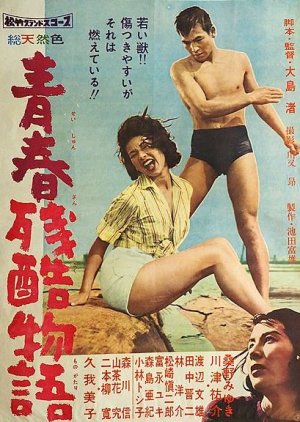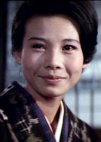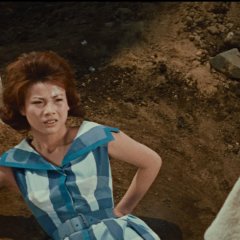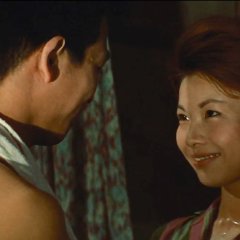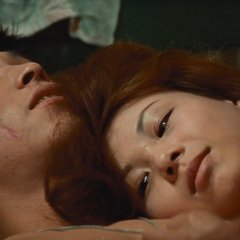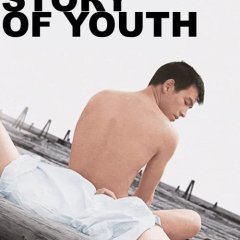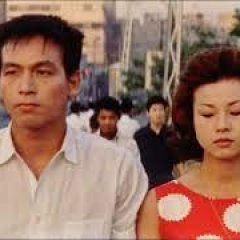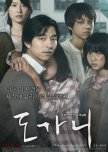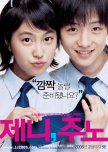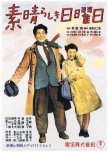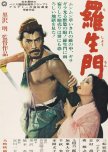- Română
- English
- magyar / magyar nyelv
- dansk
- Titlu Nativ: 青春残酷物語
- De asemenea cunoscut ca și: Seishun Zankoku Monogatari , Naked Youth
- Scenarist și Regizor: Oshima Nagisa
- Genuri: Romantism, Dramă, Matur
Cast și credite
- Kawazu YusukeFujii KiyoshiRol Principal
- Kuwano MiyukiShinjo MakotoRol Principal
- Sato KeiMatsuki AkiraRolul de Sprijin
- Kuga YoshikoShinjo YukiRolul de Sprijin
- Watanabe FumioAkimoto ToruRolul de Sprijin
- Tanaka ShinjiIto YoshimiRolul de Sprijin
Recenzie

Această recenzie poate conține spoilere
Essential Masterpiece
In 1960, at the time of the release of 'Cruel Story of Youth', Japan was in the midst of a series of protests against the renewal of the Japan-America treaty (Anpo) and the related growing student movement; Oshima, like many of his contemporary colleagues, not even 30 years old at the time, was a keen observer of the ongoing changes, perceived this new feeling of revolt that would even lead to a split in the Japanese Communist Party towards even more radical ideas, and succeeded in making two other features that were strongly integrated in that historical moment.The picture is produced by the major Shochiku, a legendary company founded in the 1920s, which enforces the use of CinemaScope and colour, not particularly favoured by the new generation of filmmakers; The film studio is perhaps convinced that it can exploit the late 1950s phenomenon of the so-called "Taiyozoku Eiga" (Sun Tribes), movies based on Ishihara Shintaro's novels about the angry and dissolute youth of that period, but "Cruel Love Story" ends up by upsetting the cards, literally overturning the Japanese film table and pushing the pedal even deeper, highlighting the general traits of what will be defined in a simplistic way, Nūberu Bāgu, in response to the French ‘Nouvelle Vague’ film scene revolution , definition is certainly not appreciated by Oshima since, like other filmmakers of the time such as, for instance, Masahiro Shinoda or Yoshishige Yoshida, he feels more artistic (and political) affinities with the Polish cinema of Andrzej Wajda, in especially his 'Popiól i diament' (Ashes and Diamonds).
The plot is well known: Shinjo Makoto, a young under-age female student, and Fujii Kiyoshi, an idle aspiring gangster who met in the middle of a tragic situation, fall in love and decide to set up a racket where she picks up unsuspecting drivers who offer to accompany her (with obvious ulterior intentions) while he, on a motorbike, breaks into the scene at the right moment, threatening them with prosecution and beating them up, with the aim of extorting money from them... Of course, the consequences will have a price to pay...
The picture was a huge success with audiences and was critically read as the Oriental response to “À bout de souffle”, the first masterpiece by French director Jean-Luc Godard, starring Jean Paul Belmondo and the stunning (and very unfortunate) Jean Seberg; Behind the undoubtedly obvious analogies, starting with the style, the cinematic approach, the use of the hand-held camera (however with stylistic variations and more 'natural' movements than Godard or even the Brazilian master Glauber Rocha, who was also shortly to become the forerunner of the 'Cinema Novo' movement) and the display of close-ups, there is however a whole series of aspects that make Oshima's movie memorable:
"Cruel Story Of Youth" is characterised by a whole series of stylistic innovations and breaking elements, contravening the rules established by the masters, 'fathers' of Japanese cinematography such as Ozu, Mizoguchi etc. Pervaded by an existential pessimism that spares no one, Oshima portrays a generation, that of the twenty-somethings, of outcasts, completely lost in an absolute nihilism, in rebellion against any moral, social or political convention, devoid of dreams or ideals and with a self- destructive, absolute anarchic inclination to crime. Practically 'rebels without a cause', and without the extraordinarily melodramatic romance of Nicolas Ray's masterpiece with James Dean and Natalie Wood.
A revamping of conceptions capable of shifting the focus from the 'classic' representation of the family - think of Ozu and its role within the modernist changes in Japanese society, or Naruse for his work on ordinary people and the condition of women in the Land of the Rising Sun - towards a representation of identity and individualistic logics, linked to the new post-war and unconventional generations.
"Adults Don't Understand Me" ('Otona Wa Wakatte Kurenai') is the translation of the Japanese title of Truffaut's "Les Quatre Cents Coups" and behind this simplification one can summarise the confrontation-generational clash with the movie's adults, well represented by Makoto's older sister and her ex-lover, the doctor Akimoto, in a dramatically representative moment, in which all the disillusionment of the two mature ex-lovers emerges, aware of a generational failure that has wiped out all their youthful dreams (it almost brings to mind Ozu's movie of 1932), which is counterbalanced by Kiyoshi's spiteful observation that he has no dreams whatsoever and therefore does not risk ending up like them...
But there is also the deep frustration of Makoto's older sister Yuki, who admits to envying their freedom, even sexual freedom (explicit, in the truly adult dialogues that stand out from the start), along with the authorial inability of their father, practically reduced to a caricature incapable of any adult decision and, figuratively speaking, placed on the fringes of the conversations (and the frames).
Alone and aware that they are condemned to a sad, sordid existence, estranged from the strict rules of Japanese society, the two young lovers wander aimlessly, in the beautiful Michelangelo Antonioni-style pre-finale, 'lost' in their city, on their way to their inevitable fate....
It is easy to imagine the cultural shock the picture may have caused in 1960 in a country deeply lacerated by student revolts, by the wounds of World War II, in its attempt to raise its head again, opening up to the world in an attempt to show its best side;
Oshima, an exceptionally sharp master, manages to remove that gloss of respectability, almost of whitewashed sepulchres, taking what, in the hands of another filmmaker, could have been a noir or a conventional yakuza movie and providing the representation of a cynical world, without pity and hope that, in countless thematic variations, will pave the way for a truly rich cinematic decade for Japan. As far as I am concerned, it is one of the first Japanese cinema auteur movies that I have been able to appreciate since my youth, it was often televised at night, paired with Seijun Suzuki's 'Gate of Flesh' (another seminal director for me); the DVD version (on which I based the review) displays superior attention to subtitles, making more explicit the depth and rawness of the dialogues that were decidedly adult for the time.
Essential masterpiece
Considerați utilă această recenzie?
Recomandări
There have been no recommendations submitted. Be the first and add one.

